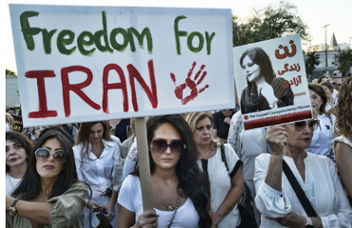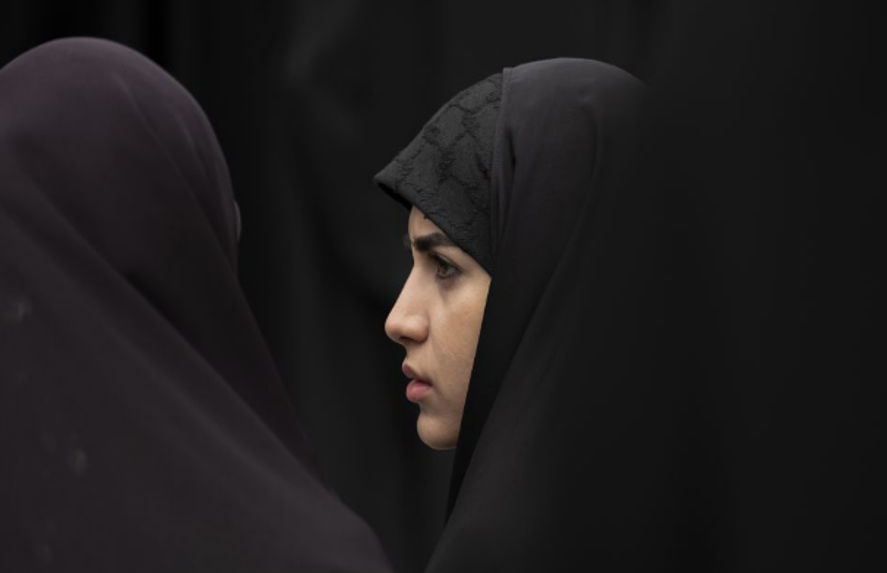Introduction
The declaration of so-called ‘treatment clinics’ for women of Iran who do not obey hijab laws is part of a constant battle for women, their liberties, and their bodies, that has become an international concern about the rampage of systematic control measures.
These clinics, which claim to treat ‘psychological disorders’ associated with failure to adhere to dress codes are questionable; critics have termed them as demeaning, a reflection of entrenched unfair treatment of women. This process is also the result of merging the global endeavours of gender, governance, and culture.
Background: A History of Control
Compulsory codes have been used throughout history as ways in which governments wish to exert some kind of control. In the case of Iran, the hijab was imposed soon after the formation of an Islamic Republic through the revolution of 1979. People in support of such laws have always claimed that these laws preserve/cult values. Despite these mandates’ advantages, opponents, especially women, argue that they infringe on civil liberties and personal freedom.
This conflict seems to reiterate typical gender trends where women become pawns on which political and cultural wars are fought.
The killing of Mahsa Amini in September 2022 due to the violation of the hijab code, spirited protests across the Islamic Republic of Iran. The slogan “Women, Life, Freedom” became one of the significant events in the contemporary history of modern Iran which demonstrated a desire to change the main social norms in the direction of rejecting the idea of limitations provided by the state. The A response has instead been characterised by pogroms in which women have suffered arrest, abuse, and violence for challenging these measures.
The Ethical and Legal Question
Setting up clinics to deal with hijab rebellions is problematic in ethical and legal terms. Opponents pointed out that the sanitised dissent narrative erases individual rights and pathologies of all forms of protest. Opinion of Iranian psychiatric associations and other medical organisations have come up strongly against the use of medicine for political gain and noticed the violation of the medical code of ethics.
As for psychoactive medications and physical treatments, they state that those practices deprive patients of the right to voluntary consent and thus contradict such values as autonomy and informed consent which are the foundation of professional practice.
In the customs of international human rights, such practice is prohibited. Basing compliance on the usage of medical facilities to force people to adhere to the state laws is a clear indication that the state poses a danger not only to people’s freedom but also to the mental health systems. These actions are reminiscent of the Soviet practice of using psychiatry to punish dissenters and the hospitalisation of dissidents.
The second issue of Focus on Ethics and the Law
Establishing clinics for dealing with hijab rebellions is immoral and unlawful on ethical and legal considerations. Critics argued that the sanitised dissent narrative absences individual rights and medicalizes every form of demonstration. The answer to democratic people’s advice by the Iranian psychiatric associations and other organisations has been raising against the use of medicine for political aims and has pointed to the contradiction to the medical ethical code.
Regarding psychoactive medications and physical treatments, they claim that those practices negate the patient’s right to voluntary consent contradicting such professional values as autonomy and informed consent which are inalienable sacred standards of professional practice.
In the customs of international human rights, such practice is unlawful. Making compliance depending on the use of the medical facilities in making people obey the state laws shows that the state is a danger not only to liberty but also to the mental health systems. These actions are reminiscent of the soviet usage of psychiatry as a punitive measure against dissidents, the dissidents’ hospitalisation.

Gender and Governance in a Multi-World Perspective
The situation in Iran is not unique to its kind, which can be inferred from the following arguments. Women in today’s society are oppressed in various ways by cultural, religious or state organisations in aspects such as dress code and freedom. From the Taliban officially regulating women’s clothing in Afghanistan to the French right wanting to ban the wearing of the burqa in France, the body of women, specifically what they wear, is at the centre of ideological and political conflict.
Many of these regulations are justified with references to cultural or moral concerns, thus negatively affecting women through Gender Discrimination. The debate about women’s Nascent Autonomy, therefore, involves other questions such as governance, democracy and voice, and modernity and tradition about Women’s Nascent Autonomy, therefore, involves other questions such as governance, democracy, and voice, and modernity, and tradition.
Resistance and Activism
These women refuse to be bound by these laws and campaign for equal rights all over the world. In Iran, the inspection of hijab duties has been actively violated, and social networks have become the platform for this. Introducing the collective way of fighting for human rights, activists all over the world, domestic and international have been appealing for supporting each other and encouraging governments and organisations to fight for the suppression of oppressive regimes.
Whether organised on a global level through the hashtag campaigns such as #MeToo, “Women, Life, Freedom,” or on the local level in specific countries, there is a more conscious push towards change. These efforts inform the world that women’s rights are an issue that cuts across cultures and geographical regions.
Broader Implications
Iran’s treatment centres are deeply embedded in a struggle for power within a society between authority and freedom. In doing so, the regime aims at denouncing genuine critics as mentally ill and therefore should not be heeded. This strategy, however, has the danger of having the opposite effect: it informs the migrant where far states are willing to go to stop self-governance.
While women in Iran and other parts of the world rise against these systems, the world looks on. The result of these struggles will define not only the sociopolitical future of individual nations but also international human rights and gender equality discourses.
An Interesting Overlap of Rights and Ideas
In ideological terms, the clinics that Iran wants to establish signify a conflict between state sovereignty and subject liberty. In this way, the regime displaces political protest and hues of dissent with the guise of mental illness, thus attempting to discredit actual political resistance. This strategy not only prejudices women’s rights but also threatens the credibility of mental health services in the country.
In view of rising tendencies towards polarisation, these clinics may be a nascent area, which capsules changes within Iranian society. Here traditional Islamic values clash with the relatively recent calls for freedom and individual rights, and the world still waits to see whether the oppressed shall rise in Iran.
Conclusion
Gender equity, democracy, and cultural aspirations are among today’s most challenging and abstract issues. “Treatment clinics” for hijab defiance show how far Iranian authorities are willing to take things to maintain the status.
Yet, the resistance it has provoked underscores an enduring truth: In the struggle for people to gain their freedom and enjoy their rights regardless of the strength of their enemies, the people cannot just sit idle and close their mouths. New generation movements regarding gender equality rise all across the world and these movements change the world and set the stage for freedom and justice against oppression.
-NANDINI VERMA
MUST READ: JUSTICE NAGARATHNA SLAMS STATES FOR LETTING AFFORESTATION FUNDS GATHER DUST


